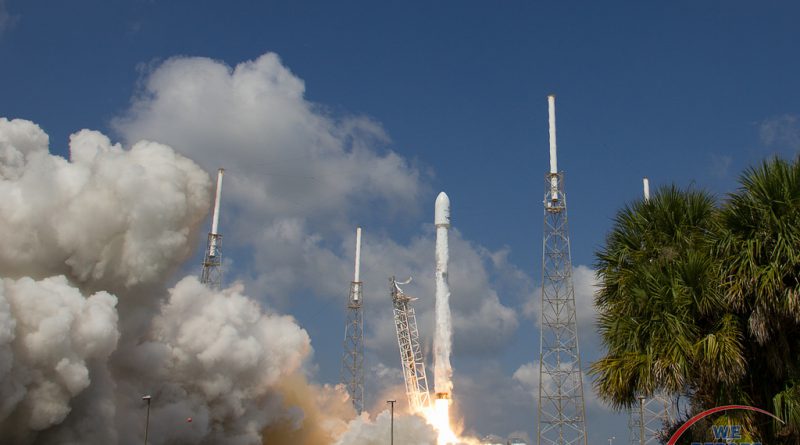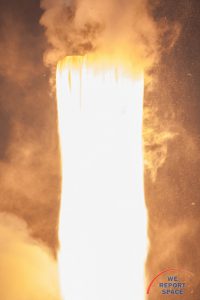SpaceX Delivers Two Communication Satellites to Orbit

At 10:29 AM local time on 15 June 2016, a SpaceX Falcon 9 rocket lifted off from SLC-40 at Cape Canaveral Air Force Station. Stacked in the payload fairing were two Boeing-built satellites.
Eutelsat 117 West B will strengthen the video capacities to Latin America clients in the field of telecommunications and government services. Originally to be called Satmex 9, the satellite was renamed after Eutelsat acquired Satmex in January 2014.

ABS-2A will serve Africa, MENA, Russia, South Asia and South East Asia with video and key communication services at 75 degrees E.
Both satellites feature all-electric propulsion, which minimizes spacecraft launch mass. This payload was similar to the 2 March 2015 launch of ABS-3A and Eutelsat 115 West B. In both cases, the launch cost is split between ABS and Eutelsat, further lowering launch costs.
Of note is the rapid pace of SpaceX launches from SLC-40. This launch occurred just 19 days after the 27 May 2016 launch of Thaicom-8. While 19 days is not the fastest turnaround (that belongs to the 13-day gap between CRS-6 and TurkmenAlem52E/MonacoSAT in April 2015), this represents the fourth SpaceX launch in 69 days, eclipsing the past record of four launches in 70 days from July 14 to September 21 2014. In contrast, the competing Atlas-V rocket from ULA requires a 28-day turnaround between launches. SpaceX’s next scheduled launch is CRS-9 in 31 days on 16 July 2016.
SpaceX predicted that landing the first stage on the drone ship would be particularly tricky. As the SpaceX webcast showed the first stage approaching the drone ship, a cloud of smoke appeared and the remote cameras cut out, leaving the fate of the first stage in doubt. Elon Musk initially tweeted it was a RUD (Rapid Unplanned Disassembly). On 17 June 2016 Elon Musk tweeted that the landing was not as fast as thought, but that the engines accordioned and the primary airframe was destroyed. However, Musk also said that upgrades underway to enable the rocket to compensate for a thrust shortfall in one of the three engines. He predicted this upgrade would be ready by the end of 2016.
After the first successful landing of a Falcon 9 first stage on a drone ship on April 8, 2016, Elon Musk predicted a 70% success rate for landings in 2016 and a 90% success rate in 2017. The current failed landing attempt brings SpaceX to 75% success on Florida landings since April and to a 60% success rate for Florida landings in 2016. (SpaceX has failed in both landing attempts from Vandenberg AFB in California. If you factor in the 17 January 2016 failed landing at VAFB, SpaceX stands at a 50% success rate for 2016).

Stunning, full color photo book covering every east coast launch spanning 2014-2015, including the first-ever powered landing of a SpaceX Falcon 9 rocket.
More Info



